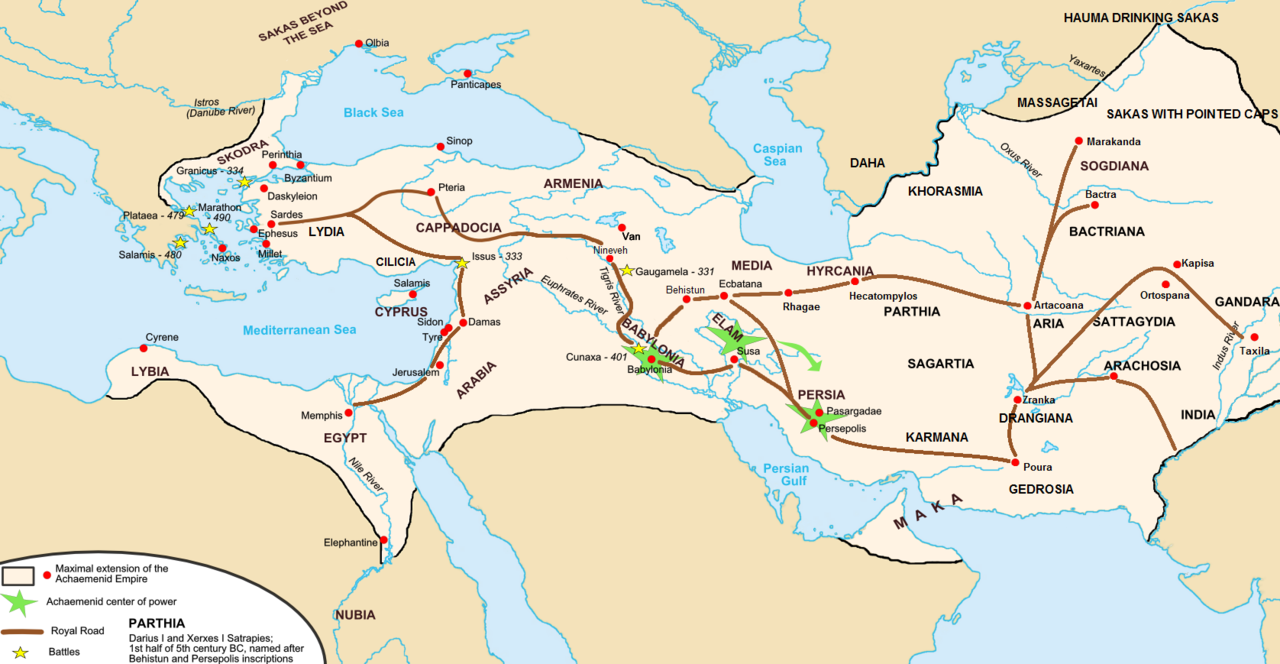
Elam is one of the oldest matriarchal civilizations in the world, as matrilineal ascendancy was the norm. The kings were referred to as the "son of a sister". The Elamite pantheon included the Female god, Kiririsha, ruling the pantheon at the height of their power. The snake or the serpent, the fish, and the moon, considered feminine symbols, were depicted on ritual pottery and temple sculptures.
Middle Elam began around 1500 BC with the rise of the Ashanite dynasties. The first Kidinuids wrote their inscriptions in Akkadian (like the Babylonians). They called themselves servants of Kirwashir, an Elamite deity from the (as we know it) Iranian plateau or highlands. The Igehalkids dominated from 1400 to 1210 BC, and wrote their inscriptions in the Elamite language. The Kassites were conquering old Babylon then, but the Igehalkids married Kassite princesses, and were able to repel later Kassite invasions.
The Shutrukids dominated from 1210 to 1100 BC. They raided Babylon, and captured the idol of Marduk, the stele of Hammurabi and other treasures, carrying them back to Susa. They ruled Babylon briefly, before being defeated by, and paying tribute to, Assyria. This was a mistake that cost Elam its independence for over four centuries. Babylonian kings invaded many parts of Elam, and the cultural influences of the Babylonians and the Assyrians caused a steady decline in Elamite culture.
The penultimate Shutrukid was defeated by Nebuchadnezzar I (not our Nebuchadnezzar), who sacked Susa and carried back the idol of Marduk and other treasures, but Nebuchadnezzar I was defeated by the Assyrians, and Babylon would not rise again until Nabopolasser, with the Medo-Persians, sacked Ninevah. drunken party.
Asshurbanipal of Assyria boasted of destroying Elam in 640 BC:
Susa, the great holy city, abode of their Gods, seat of their mysteries, I conquered. I entered its palaces, I opened their treasuries where silver and gold, goods and wealth were amassed...I destroyed the ziggurat of Susa. I smashed its shining copper horns. I reduced the temples of Elam to naught; their gods and goddesses I scattered to the winds. The tombs of their ancient and recent kings I devastated, I exposed to the sun, and I carried away their bones toward the land of Ashur. I devastated the provinces of Elam and on their lands I sowed salt.However, he was boasting, and Elam retained dominion of parts of Persia, and the Elamite culture significantly influenced Persian culture, with later Persian courts adopting the Elamite language. The Ilam province of Iran derives its name from the Elam. There was a steady immigration of Medes (Parthians, etc) and Parsu (Persians) into the highlands that would soon become the dominant people. Ezekiel describes the decline of Elam in Ezekiel 32:24. By 540 BC, Susa is ruled by Medo-Persians, as a province of the Babylonian empire and later becomes a capital of the empire of silver.
He will make war south in Egypt, east in Parthia, and the pleasant land of Israel.
Antiochus IV attacks Egypt with a fleet. While in Egypt, he is stopped by an old Roman ambassador, Gaius Popillius Laenas, who demands he withdraw from Egypt, or consider himself at war with Rome. Antiochus says he will discuss the matter with his council. Popillius draws a circle around Antiochus in the sand and says, "Before you cross this circle, give me a reply for the Roman senate." Antiochus decides to withdraw, and only then does Popillius shake hands. This is the origin of the phrase "a line in the sand".
While Antiochus is busy in Egypt, the first Hellenizing "high priest" Jason, highest bidder for the post when Antiochus IV came to power, but recently outbid by Menelaus, attacks Jerusalem with an army of 1000 to depose Menelaus, who is forced to flee.
Antiochus, smarting from his embarrassing encounter with Rome, thinks there is a rebellion (as opposed to infighting among his lackeys), attacks Jerusalem, restores Menelaus, and executes 40000 Jews and sells 40000 into slavery. Determined to stop the problem at its source, Antiochus abandons Seleucid, Persian, and Babylonian policy at all other times and places since Nebuchadnezzar, and issues a decree outlawing the religion of an entire people. He stops the temple sacrifices in Jerusalem, forces monthly sacrifices of pigs in the temple, forces faithful Jews to eat pork, and to worship Zeus/Jupiter or die. Mothers caught with circumcised infants are paraded around the city with their infants clinging to their breasts, and then thrown from the walls. Sabbath observance is a capital offense. A total of around 160000 Jews were murdered or enslaved.